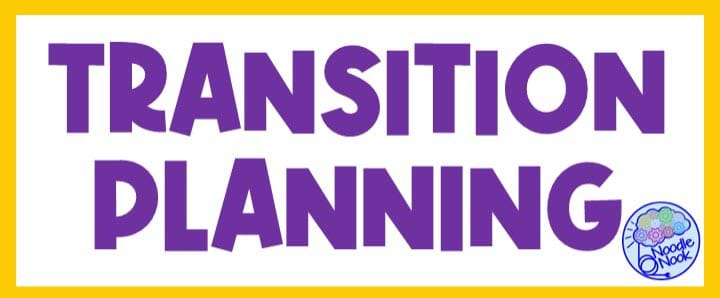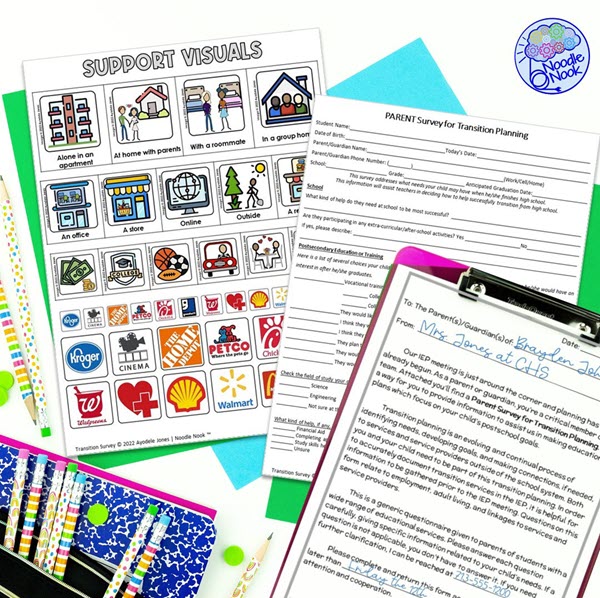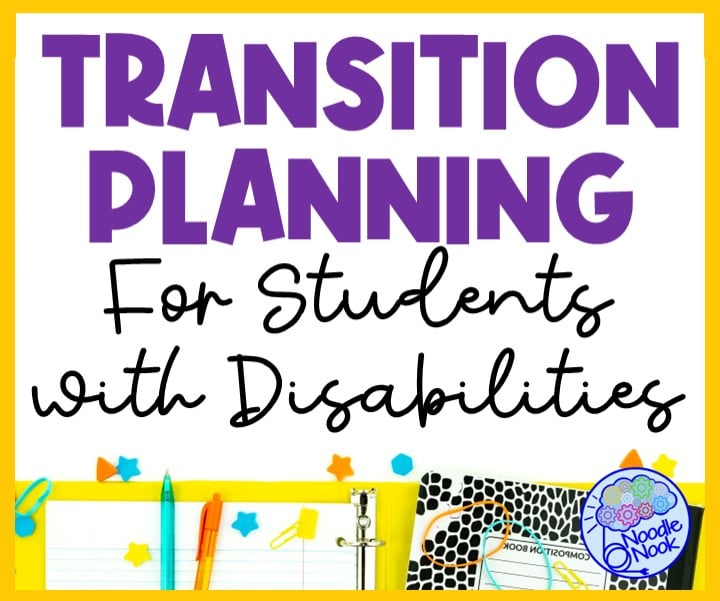If you’re a parent or educator of a student with special needs, you know firsthand the importance of planning for the future. Transition planning for students with disabilities is an ongoing process that helps them prepare for the move from school to adult life. It’s all about setting goals, identifying needs, and coordinating with relevant agencies and professionals. We do this to ensure that the student has the support and services they need to succeed.
Your Transition Team
It’s critical to the success of the student and the plan that the family, teachers, and the student participate in transition planning.
Families are the primary advocates for their children and play a key role in the transition planning process. They can provide valuable insight into the student’s strengths, needs, and goals. And they work with the student and other professionals to develop a plan that meets their unique needs.
Teachers can also play a vital role in transition planning by providing information about the student’s current level of functioning and identifying areas of concern or need for further development.
Students should also be actively involved in the transition planning process. This empowers them to take an active role in shaping their own future. It also helps to ensure their plan reflects their unique needs and goals.
It’s important for all of these individuals to work together in a collaborative and coordinated manner to ensure that the student’s transition is successful.
Steps to Transition Planning
We’re exploring the key steps of transition planning for students with disabilities. Here are specific tips and resources for parents and educators to help support students with disabilities in the journey toward independence and adulthood. Let’s start by outlining the process of transition planning and your role in it.
1. Identifying Needs and Goals
Identifying goals and needs is a crucial step in the transition planning process. After all, if you don’t know where the student wants to go in their life, it’s impossible to plan a way to get there.
That means understanding the unique strengths, needs, and goals of the student. It also means using this information to develop a plan that meets their individual needs. One of the most important things to consider is the student’s current level of functioning. Reflect on the student’s needs and goals in the area of academics, social skills, and functional skills. You can also consider vocational training as well.
When working to identify the student’s interests, preferences, and aspirations. These will inform the direction of the plan and provide motivation for the student. Getting this information means the intentional involvement of the student in the planning process. That way we know the plan reflects a student’s unique needs and goals. Plus, it empowers them to take an active role in shaping their own future.
If you are working with students who are nonverbal or minimally verbal, try using a picture inventory or a visually-based survey to get them involved.
2. Assess Current Levels
Assessing the student’s current level of functioning is an essential step in the transition planning process. It involves evaluating the student’s skills, abilities, and needs in various areas, including academic, social, and functional skills. This can help to identify areas of strength, as well as areas of concern or need for further development. Consider the student’s current performance in a range of areas, including their academic progress. Also include things like social skills, communication abilities, and functional skills such as self-care, mobility, and job readiness.
By assessing the student’s current level of functioning, we can better understand their needs. That makes it easier to develop a plan that addresses any areas of concern or need for further development. This information can also be used to set realistic and achievable goals for the student’s transition to adulthood.
3. Develop a Plan
Once the student’s goals and needs have been identified and assessed, the next step is to develop a plan to support the student’s transition to adulthood. This involves setting specific goals and objectives for the student’s transition. You’ll also want to identify the supports and services needed to achieve these goals and develop a timeline for implementing the plan.
It’s important to tailor the plan to the student’s unique needs and goals as well as take into account the student’s current level of functioning. By setting clear goals and objectives, and outlining the steps needed to achieve them, we can help the student progress toward independence and success as they transition to adulthood.
4. Implementing and Monitoring the Plan
Implementing the plan is not a solo job. It’ll take the entire team to make sure students can be successful. At this stage, coordinate with relevant agencies and professionals to provide the student with the support and services they need to achieve their goals.
This may involve working with therapists, counselors, vocational rehabilitation specialists, and other professionals to provide specialized services and support. These professionals can help students develop the skills and abilities needed for daily living, communication, mobility, emotional well-being, and career readiness.
It’s also important to monitor the student’s progress and make any necessary adjustments to the plan as needed. This can involve adapting the plan to meet the student’s changing needs, or adding additional supports or services to help the student progress towards their goals.
In addition to coordinating with professionals, it’s also important to support the student in building independence and self-advocacy skills. This can involve helping the student to develop decision-making skills, problem-solving skills, and self-advocacy skills. These will be important for their success as they transition to adulthood.
Top Tips for Transition
There are a few key things you can do to make sure your part of transition planning for students with disabilities is top-notch.
- Start the transition planning process early: Don’t wait until the last minute to start thinking about the student’s transition to adulthood. Start the process early. Ideally at least a few years before the student is set to graduate. This will give them ample time to explore their options and make informed decisions.
- Involve the student in the planning process: Involve the student in the planning process as much as possible. Encourage them to set their own goals, express their preferences, and participate in decision-making.
- Collaborate with other professionals: Transition planning often requires the support of multiple professionals, such as therapists, counselors, vocational rehabilitation specialists, and others. Make sure to collaborate with these professionals and involve them in the planning process.
- Utilize community resources: There is a wide range of community resources available to support students with disabilities during the transition process. These may include internships, job shadowing opportunities, volunteer opportunities, and more. Utilize these resources to help the student gain valuable real-world experience and build their skills.
- Be flexible: Transition planning is an ongoing process. A student’s needs and goals may change over time. Be prepared to be flexible and adjust the plan as needed to meet the student’s evolving needs.
- Encourage self-advocacy: Help the student develop self-advocacy skills and encourage them to speak up for themselves and advocate for their own needs and preferences.
- Keep the student’s long-term goals in mind: While it’s important to focus on short-term goals and objectives, it’s also important to keep the student’s long-term goals in mind. This can help ensure that the student’s plan is aligned with their overall aspirations and helps them achieve success in the long run.
Preparing for the Transition to Adulthood
The final step in the transition planning process involves exploring post-secondary options, such as education, employment, and independent living, and identifying the resources and supports needed to achieve these goals.
Money is an important thing to consider here because long-term care and services over a student’s lifetime can add up. Look into accessing financial resources and benefits, such as grants, scholarships, and government assistance programs, to help support the student’s transition.
Preparation in the Classroom
In the classroom, you’ve been following the transition plan and IEP for years to prepare a student. Up until graduation, continue to focus on developing communication skills, problem-solving skills, and social skills.
It may also improve outcomes to help students build independence and self-advocacy skills, such as decision-making skills and self-management skills. Provide them with opportunities to practice these skills in real-world settings. That includes community-based instruction, community-referenced instruction, and community-based vocational instruction or volunteering. In addition to building skills, it’s also important to help students understand their rights and responsibilities as members of the community. This can involve teaching them about laws and policies that impact their rights and freedoms. This is all about helping them to learn how to advocate for themselves and others.
Conclusion
Transition planning is a journey for students with disabilities as they embark on the transition into adulthood. It is a time to reflect on their strengths, needs, and goals, and to envision a bright future filled with possibilities.
Teachers can help students find their path to success and independence by having a clear transition plan. By supporting students through this process, we can help them achieve their dreams and make their mark on the world as confident and capable adults.
Article Citation: [cite]



